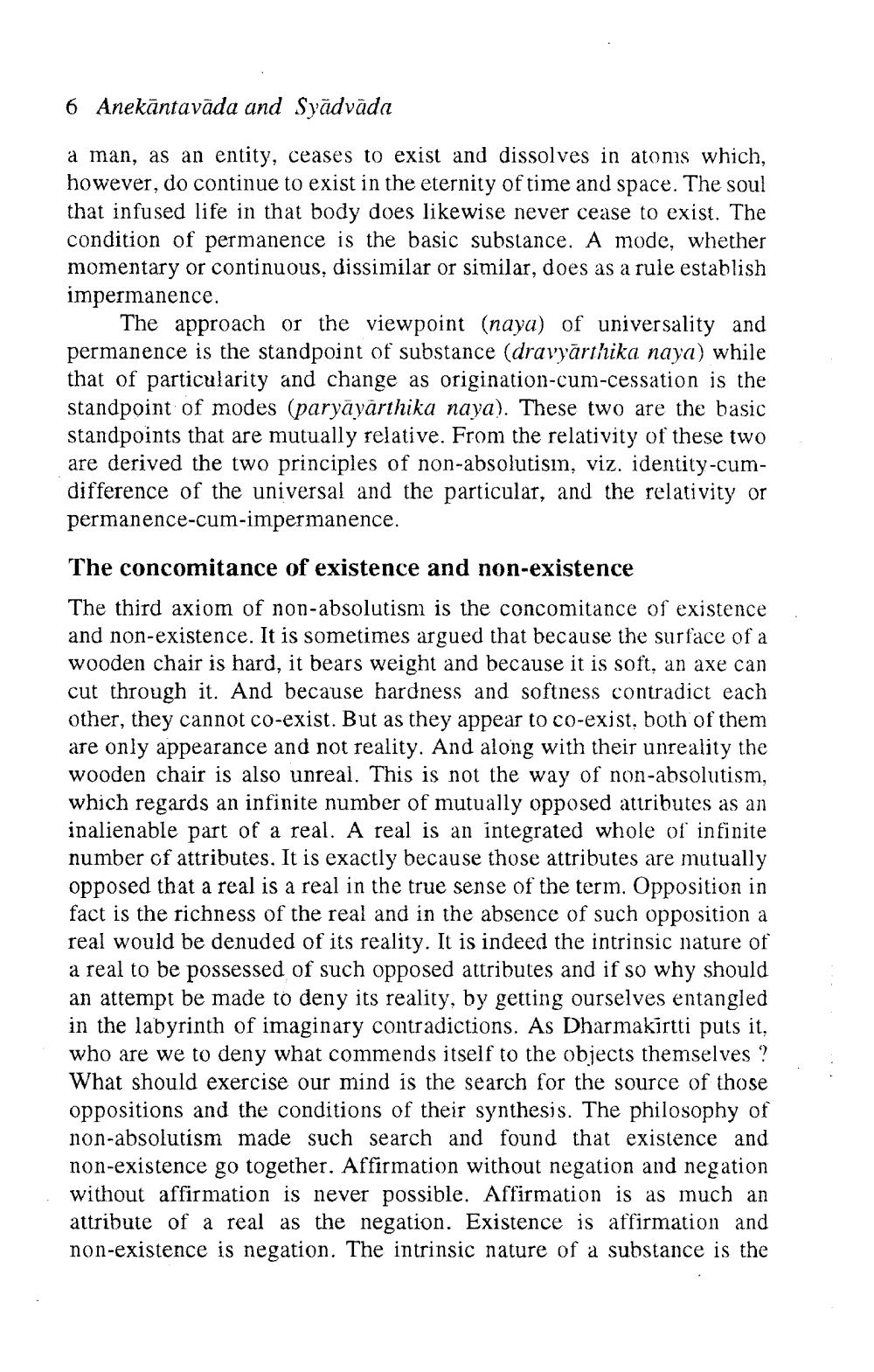________________
6 Anekāntavāda and Syädvāda
a man, as an entity, ceases to exist and dissolves in atoms which, however, do continue to exist in the eternity of time and space. The soul that infused life in that body does likewise never cease to exist. The condition of permanence is the basic substance. A mode, whether momentary or continuous, dissimilar or similar, does as a rule establish impermanence.
The approach or the viewpoint (naya) of universality and permanence is the standpoint of substance (dravyarthika naya) while that of particularity and change as origination-cum-cessation is the standpoint of modes (paryayarthika naya). These two are the basic standpoints that are mutually relative. From the relativity of these two are derived the two principles of non-absolutisi, viz. identity-cumdifference of the universal and the particular, and the relativity or permanence-cum-impermanence.
The concomitance of existence and non-existence The third axiom of non-absolutism is the concomitance of existence and non-existence. It is sometimes argued that because the surface of a wooden chair is hard, it bears weight and because it is soft, an axe can cut through it. And because hardness and softness contradict each other, they cannot co-exist. But as they appear to co-exist, both of them are only appearance and not reality. And along with their unreality the wooden chair is also unreal. This is not the way of non-absolutism, which regards an infinite number of mutually opposed attributes as an inalienable part of a real. A real is an integrated whole of infinite number of attributes. It is exactly because those attributes are mutually opposed that a real is a real in the true sense of the term. Opposition in fact is the richness of the real and in the absence of such opposition a real would be denuded of its reality. It is indeed the intrinsic nature of a real to be possessed of such opposed attributes and if so why should an attempt be made to deny its reality, by getting ourselves entangled in the labyrinth of imaginary contradictions. As Dharmakirtti puts it, who are we to deny what commends itself to the objects themselves ? What should exercise our mind is the search for the source of those oppositions and the conditions of their synthesis. The philosophy of non-absolutism made such search and found that existence and non-existence go together. Affirmation without negation and negation without affirmation is never possible. Affirmation is as much an attribute of a real as the negation. Existence is affirmation and non-existence is negation. The intrinsic nature of a substance is the




